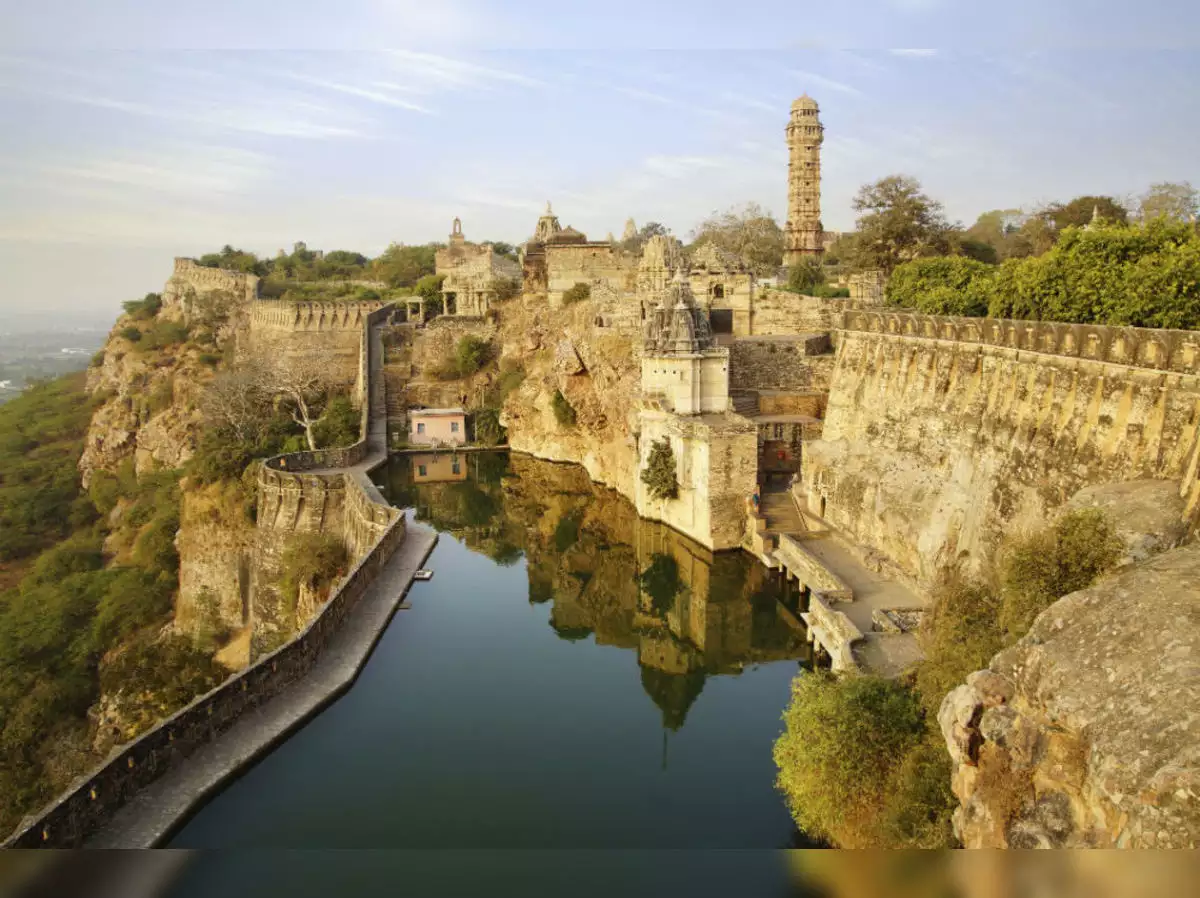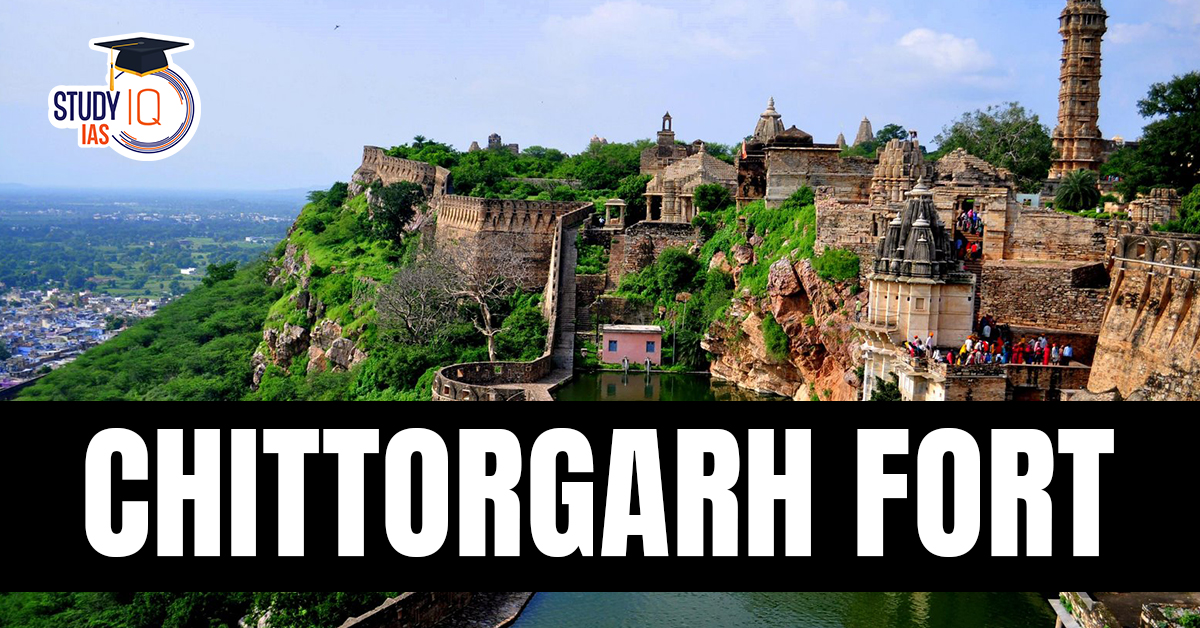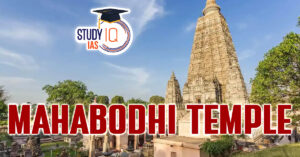Table of Contents
Context: Rajasthan Govt. is considering a complete mining ban within 10 km of Chittorgarh Fort.
About Chittorgarh Fort
- Chittorgarh Fort is located in Chittorgarh city, Rajasthan. It is one of India’s largest Forts.
- It was built by the local Mori Rajput ruler – Chitrangada Mori in the 7th century A.D.
- It was captured by the Mewar rulers in 728 CE. It later served as their capital.
- It has witnessed numerous sieges and battles, including those against Alauddin Khilji (1303), Bahadur Shah (1533) and Akbar (1567-1568).

- The fort is associated with the legendary figure of Rani Padmini and the concept of Jauhar.
- Chittorgarh Fort was declared a UNESCO World Heritage Site in 2013.
- Notable monuments inside:
- Vijay Stambh (Tower of Victory).
- Kirti Stambh (Tower of Fame)
History and Significance of Chittorgarh Fort
- Early History: The fort was originally known as Chitrakuta, and it’s believed to have been constructed by Mori rulers in the 7th century AD. Often, the fort is attributed to being captured in the 8th century AD by the Guhila (Gahlot) ruler named Bappa Rawal, while some historians tend to disagree about this.
- Capital of Mewar: During the 8th to the 16th century, Chittorgarh Fort remained the capital of the Rajput kingdom of Mewar, an era characterized by its strategic status and domination by valiant Rajput warriors.
- Three Great Sieges: Chittorgarh Fort was subjected to three great sieges by Muslim rulers:
- 1303: Alauddin Khilji, Sultan of Delhi, laid siege to the fort, motivated by his passion for Rani Padmini. The men of the Rajputs fought courageously, set on defeat, the women, under one Rani Padmini, went through the rite of Jauhar (self-immolation) to guard their honour.
- 1535: Bahadur Shah of Gujarat attacked and temporarily overpowered the fort. Once again, the Rajput women went through the ritual of Jauhar.
- 1567-68: The Mughal Emperor Akbar besieged Chittorgarh. After prolonged resistance, the fort was lost, and there was another Jauhar.
- Symbol of Rajput Pride: Chittorgarh Fort never became an establishment of invaders and always stayed a symbol of Rajput’s courage and resistance despite all these horrible incidents. Chittorgarh Fort’s legends of bravery and sacrifice are quite embedded in local culture.
- UNESCO World Heritage Site: With its monumental historical and cultural value, UNESCO included Chittorgarh Fort in 2013 as one of the World Heritage Sites in the group “Hill Forts of Rajasthan”.
Architecture of Chittorgarh Fort
- Massive Complex: The fort itself is one of the largest fortifications in India, sprawling on about 700 acres at an elevation of about 180 meters high. It has a 13-kilometre-long periphery wall to encircle the complex.
- Seven Gates: Climbing to the fort requires going through seven huge stone gates (Pols), each constructed by the Mewar king Rana Kumbha, as strong defence barriers. They are: Paidal Pol, Bhairon Pol, Hanuman Pol, Ganesh Pol, Jorla Pol, Laxman Pol, and Ram Pol (the central entrance).
- Palaces: The fort complex contains several palaces, such as:
- Rana Kumbha Palace: The oldest of palaces and connected with great personalities such as Maharana Udai Singh and poetess Meera Bai.
- Padmini’s Palace: A lovely three-storied palace on a lotus pool, historically noteworthy because of the legend surrounding Rani Padmini.
- Fateh Prakash Palace: Current museum housing artefacts and history about the fort.
- Towers: Two visible towers are located within the fort:
- Vijay Stambh (Tower of Victory): Constructed by Maharana Kumbha to celebrate his victory against the Malwa and Gujarat rulers. It is a nine-storied tower that is studded with fine sculptures of Hindu gods.
- Kirti Stambh (Tower of Fame): A 12th-century Adinathji, the first Tirthankara of the Jains, dedicated tower with Digambar Jain sculptures.
- Temples: There are many Hindu and Jain temples within the fort itself, such as the Kumbha Shyam Temple, Meera Bai Temple, and Kalika Mata Temple, which highlight the religious tolerance of the place.
- Water Bodies: The fort surprisingly houses about 20 operational water bodies, which were historically important resources, giving it the nickname “Water Fort.“


 PM Modi visits Wat Pho Temple in Bangkok
PM Modi visits Wat Pho Temple in Bangkok
 Mahabodhi Temple Complex at Bodh Gaya
Mahabodhi Temple Complex at Bodh Gaya
 Nowruz 2025 Persian New Year Festival
Nowruz 2025 Persian New Year Festival





















